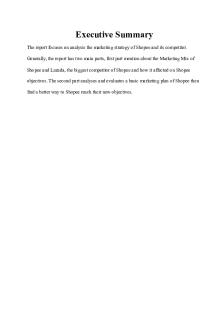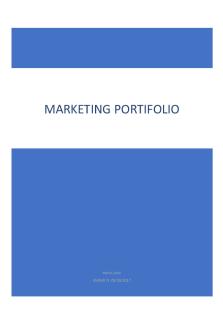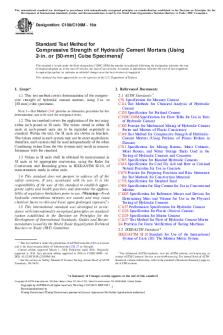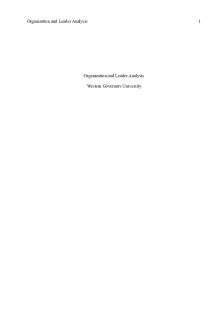C109 (revised) pdf - Grade: pass PDF

| Title | C109 (revised) pdf - Grade: pass |
|---|---|
| Course | Educational Technology for Teaching and Learning |
| Institution | Western Governors University |
| Pages | 3 |
| File Size | 59.9 KB |
| File Type | |
| Total Downloads | 97 |
| Total Views | 161 |
Summary
c109...
Description
Kyrsten Johnson! C109 Task 1!
Part A: One hand-on manipulative is Cuisenaire rods. Cuisenaire rods are a collection of versatile, rectangular rods, consisting of 10 colors and various lengths. They are used for various mathematical lessons such as addition, subtraction, measurements, etc.! Pros: Cuisenaire rods are great for addition because they are different colors and different sizes. The colors are also associated with patterns in reference to their various lengths, making memorization easy for students.! Cons: One disadvantage concerning Cuisenaire rods is that they cannot be broken down into the ones place for counting. This makes them harder for young students, such as kindergarteners, to use.! Another type of hands-on manipulative are AngLegs. AngLegs are manipulatives that snap together to form various shapes and different sizes. They are great for practicing perimeter, area, angles and other types of measurements.! Pros: One advantage of using AngLegs is that they allow students to create their own shapes to practice new problems.! Cons: One disadvantage of AngLegs is some students may not challenge themselves by trying to create their own shapes to solve problems but instead just continuing to model the teacher’s shapes.! Another type of hands-on manipulative are tangrams. Tangrams are a type of manipulative that come as varying shapes and can be pieced together to form one predetermined shape.! Pros: One advantage of using tangrams is that they promote problem-solving skills in students. Due to how they are made, students must figure out how to take them apart and fit make them into other shapes.! Cons: One disadvantage of tangrams is the level of complexity in building new shapes. Some students may become frustrated when trying to solve how to reshape them into new shapes.! Another type of hands-on manipulative is a Georeflector Mirror. A Georeflector Mirror is a manipulative that uses a piece of transparent, colored plastic to reflect a shape placed perpendicular in front of a sheet of paper. ! Pros: One advantage of using a Georeflector Mirror is how it allows students to explore lines of symmetry and reflection on an interactive and engaging level. ! Cons: One Disadvantage from using the Georeflector Mirror is that some students, especially those with visual impairments, may find it difficult to see the reflection.! Part B:! “Abacus” is the virtual counterpart to the original handheld model. Like the tangible one, students can count and move beads by clicking on them and return them all to the start position by pressing the reset button. ! Pro: One advantage from using “Abacus” is that it offers another engaging way for students to learn addition and subtraction.! Con: One disadvantage with “Abacus” is that the handheld version does not expand like the virtual version does, so this is not as beneficial for students. Weblink: https://toytheater.com/ abacus/!
“Money” is a virtual manipulative that teaches students the different skills associated with currency. By simply dragging and dropping money into a box on the screen, students can expand their knowledge of how much to pay, as well as combine coins to make exact change.! Pro: An advantage to using “Money” is that there is none of the concerns that comes when using real money, such as ripping bills up, throwing change, putting coins in mouths, etc.! Con: A disadvantage to using “Money” is the kinesthetic value that handling real money brings. Some students, mainly kinesthetic learners, would not find virtual money very interesting or useful as they cannot physically hold the money in their hands. Weblink: https:// toytheater.com/play-money-united-states/! “Fraction Pieces” is a virtual manipulative that uses a pie graph to allow students to learn at their own pace. Students can place different colored pieces into a blank circle to create a whole, thus showing how factions add up to make one whole.! Pro: “Fraction Pieces” gives students an engaging alternative to learn how fractions make up a whole.! Con: One disadvantage from using “Fraction Pieces” is that you can only place 2 charts on the screen so the fraction pieces can never add up to more than the whole number 2. Weblink: https://fractionpieces.com/! “Factor Tree” is a virtual manipulative that offers students another way to factor numbers. By entering a number into the program, the computer gives any remaining factors of the number until there are no more. The students can choose to solve one or two trees and if two are chosen then the manipulative asks students to break down the factors into the common factors and eventually ask for GCF and LCF.! Pro: An advantage to using “Factor Tree” is the time it saves from students having to draw out their own factor trees and makes reading the trees much easier.! Con: One disadvantage from using “Factor Tree” is if the number being factor is too large (i.e. 200) then the remaining factors cannot be seen and the tree disappears off screen.! Weblink: https://www.transum.org/Maths/Activity/Prime/! Part C: *See separate document! Part D:! $ The manipulative used (Cuisenaire rods) will help the students learn how to order objects by length, such as smallest to largest, while also give them a general understanding of how to measure an object. The objective of this lesson is to order objects by size in comparison and gain an understanding of measurement. These manipulatives will solidify the students’ understanding and enhance their knowledge of order placement and measurement while keeping them engaged throughout the lesson. ! Part E: $ By starting at the beginning, students can really develop and hone in on their conceptual development. This is why the teacher starts the lesson by reading a measurement book to activate prior learning and then transitions to modeling the expectations of the lesson on the document camera. Students are able to develop their problem solving skills by listening to the guided instruction from the teacher, but more so by comparing their observations with their paired partner. As a pair, students are presented with the task of measuring objects and placing them in order by size (which object is shortest? Which is longest?). By measuring and ordering different classroom objects, students can transfer what they have learned, as well as
build on it, as they continue to grow in their academic life. This plan encourages development in procedural fluency by starting at the basics of ordering and measurements and allowing a continuation of growth and development throughout each student’s life. At the end of the lesson we can see procedural fluency at work when the students are asked to place themselves in order from shortest to tallest without the guidance of the teacher.! Part F: $ I feel as though collaborative learning is effectively used in my lesson plan because for a large chunk of the lesson the students are paired up and encouraged to share their discoveries and ideas. They are able to work together and bounce off ideas to one another to figure out how long or short an object is in comparison to the Cuisenaire rods and then which object is the shortest and which is the longest....
Similar Free PDFs

C109 (revised) pdf - Grade: pass
- 3 Pages

Shopee-pass - Grade: B
- 23 Pages

MKT portfolio - Grade: pass
- 6 Pages

Task 4 - Grade: pass
- 5 Pages

ASTM C109 - ASTM C109
- 10 Pages

Task 2 - Grade: Pass
- 14 Pages

TASK 3 - Grade: pass
- 3 Pages

Task 4 - Grade: pass
- 5 Pages

Revised Corporation Reviewer pdf
- 82 Pages

C455 Task 1 - Grade: pass
- 4 Pages

C820 task 3 - Grade: pass
- 3 Pages

C207 Task 2 - Grade: Pass
- 3 Pages

C121 Task 1 - Grade: Pass
- 8 Pages

C455 Task 4 - Grade: Pass
- 5 Pages

C304 task 3 - Grade: pass
- 2 Pages

AVM1 Task 2 - Grade: Pass
- 2 Pages
Popular Institutions
- Tinajero National High School - Annex
- Politeknik Caltex Riau
- Yokohama City University
- SGT University
- University of Al-Qadisiyah
- Divine Word College of Vigan
- Techniek College Rotterdam
- Universidade de Santiago
- Universiti Teknologi MARA Cawangan Johor Kampus Pasir Gudang
- Poltekkes Kemenkes Yogyakarta
- Baguio City National High School
- Colegio san marcos
- preparatoria uno
- Centro de Bachillerato Tecnológico Industrial y de Servicios No. 107
- Dalian Maritime University
- Quang Trung Secondary School
- Colegio Tecnológico en Informática
- Corporación Regional de Educación Superior
- Grupo CEDVA
- Dar Al Uloom University
- Centro de Estudios Preuniversitarios de la Universidad Nacional de Ingeniería
- 上智大学
- Aakash International School, Nuna Majara
- San Felipe Neri Catholic School
- Kang Chiao International School - New Taipei City
- Misamis Occidental National High School
- Institución Educativa Escuela Normal Juan Ladrilleros
- Kolehiyo ng Pantukan
- Batanes State College
- Instituto Continental
- Sekolah Menengah Kejuruan Kesehatan Kaltara (Tarakan)
- Colegio de La Inmaculada Concepcion - Cebu